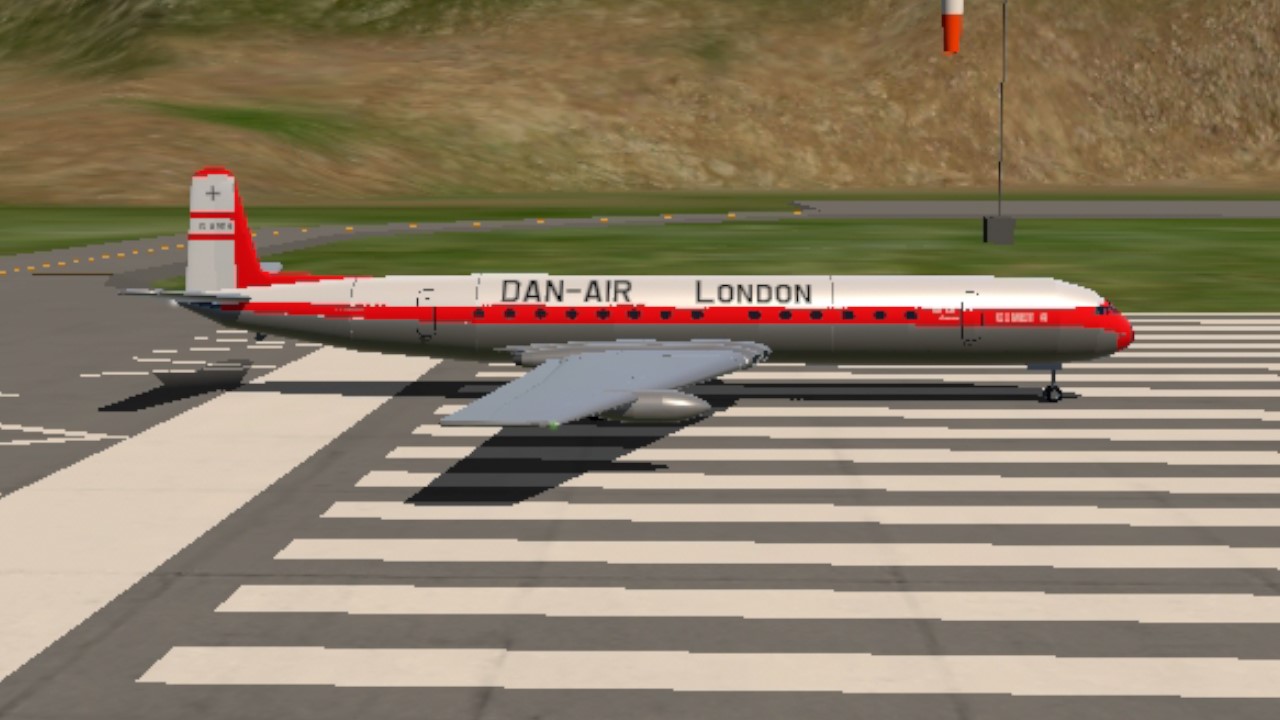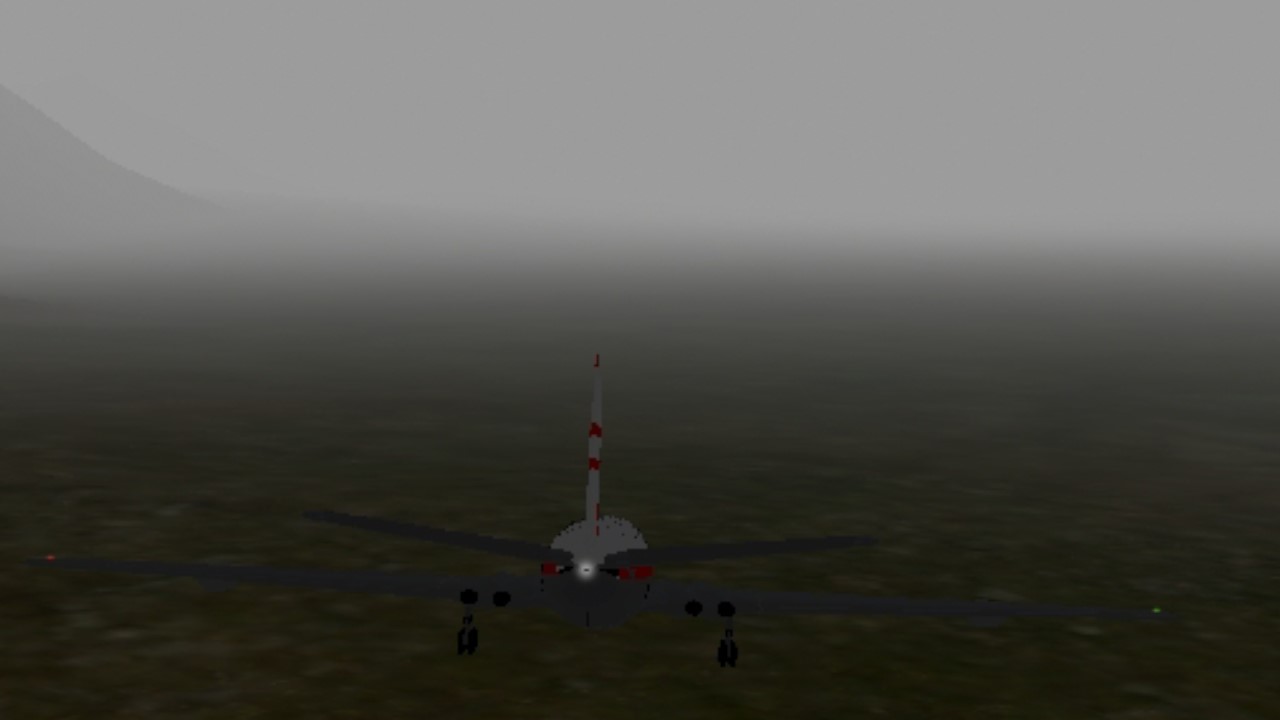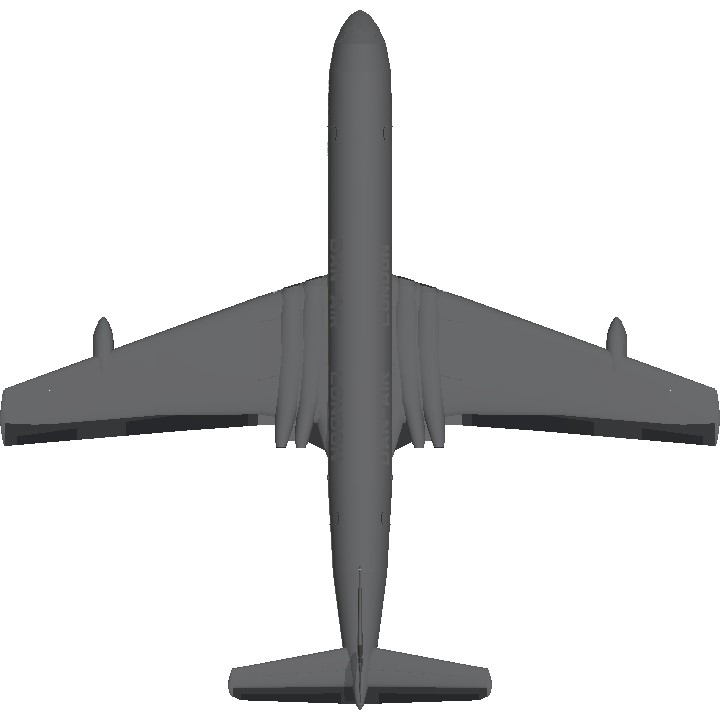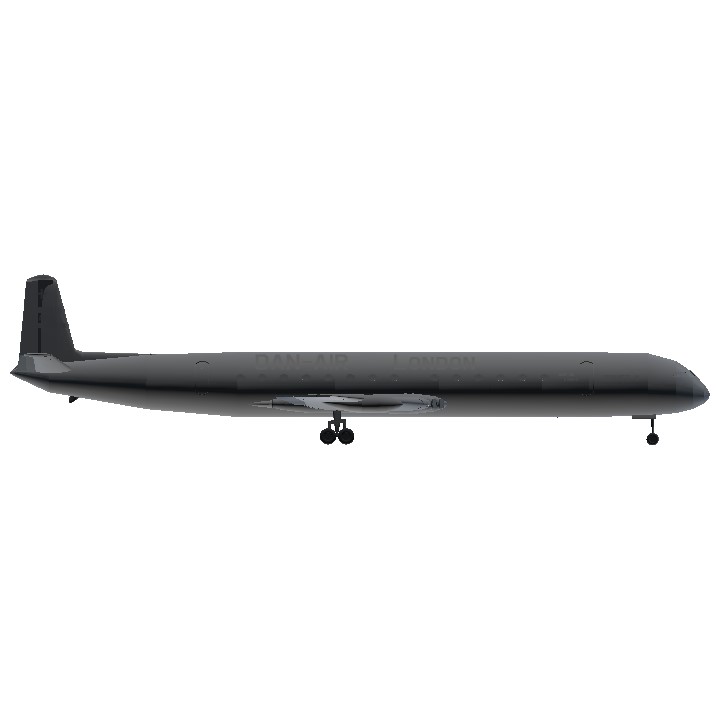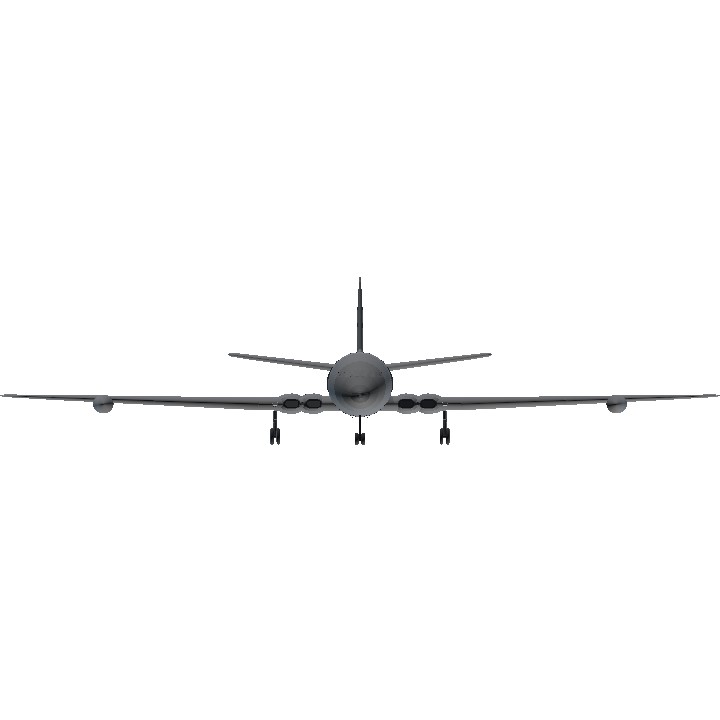de Havilland Comet
The de Havilland DH.106 Comet is the world's first commercial jet airliner. Developed and manufactured by de Havilland in the United Kingdom, the Comet 1 prototype first flew in 1949. It features an aerodynamically clean design with four de Havilland Ghost turbojet engines buried in the wing roots, a pressurised cabin, and large windows. For the era, it offered a relatively quiet, comfortable passenger cabin and was commercially promising at its debut in 1952.

British European Airways (BEA) Comet 4B arriving at Berlin Tempelhof Airport in 1969
Within a year of the airliner's entry into service, three Comets were lost in highly publicized accidents after suffering catastrophic mishaps mid-flight. Two of these were found to be caused by structural failure resulting from metal fatigue in the airframe, a phenomenon not fully understood at the time; the other was due to overstressing of the airframe during flight through severe weather. The Comet was withdrawn from service and extensively tested. Design and construction flaws, including improper riveting and dangerous stress concentrations around square cut-outs for the ADF (automatic direction finder) antennas were ultimately identified. As a result, the Comet was extensively redesigned, with structural reinforcements and other changes. Rival manufacturers heeded the lessons learned from the Comet when developing their own aircraft.
Although sales never fully recovered, the improved Comet 2 and the prototype Comet 3 culminated in the redesigned Comet 4 series which debuted in 1958 and remained in commercial service until 1981. The Comet was also adapted for a variety of military roles such as VIP, medical and passenger transport, as well as surveillance; the last Comet 4, used as a research platform, made its final flight in 1997. The most extensive modification resulted in a specialised maritime patrol derivative, the Hawker Siddeley Nimrod, which remained in service with the Royal Air Force until 2011, over 60 years after the Comet's first flight.
Dan-Air
Dan-Air (legally Dan Air Services Limited) was an airline based in the United Kingdom and a wholly owned subsidiary of London-based shipbroking firm Davies and Newman. It was started in 1953 with a single aircraft. Initially, it operated cargo and passenger charter flights from Southend (1953–1955) and Blackbushe airports (1955–1960) using a variety of piston-engined aircraft before moving to a new base at Gatwick Airport in 1960, followed by expansion into inclusive tour (IT) charter flights and all-year round scheduled services. The introduction of two de Havilland Comet series 4 jet aircraft in 1966 made Dan-Air the second British independent airline after British United Airways to begin sustained jet operations.

The early 1970s saw the acquisition of a pair of Boeing 707 long-haul jets for use on affinity group and Advance Booking Charter flights to Canada and the United States. In 1973, Dan-Air became the first British airline to operate the Boeing 727 trijet. By the mid-1970s, it had become Britain's largest independent airline, both in terms of passengers carried and fleet size, operating the country's largest charter fleet. This was also the time a Dan-Air staff member, Yvonne Pope Sintes became Britain's and Europe's first female jet captain.
By the early 1980s, the airline had also become the leading operator of fixed wing oil industry support flights, operating a fleet of 13 Hawker Siddeley 748 turboprops between bases on the Scottish mainland and the Shetland Islands under contract to firms involved in North Sea oil exploration. In 1983, Dan-Air was the first airline to launch commercial operations with British Aerospace 146 regional jet. The acquisition of an Airbus A300 in 1986 marked Dan-Air's widebody debut and the late 1980s saw a major expansion of their scheduled activities, including the introduction of two-class services on trunk routes. Passenger numbers peaked in 1989 at 6.2 million (1.8 million on scheduled services).
Lack of vertical integration with a tour operator, and an inefficient fleet mix dominated by ageing Boeing 727s and BAC One-Elevens made Dan-Air uncompetitive, resulting in increasing marginalisation and growing financial difficulties as well as a change in senior management and strategy by the early 1990s. Following unsuccessful attempts to merge Dan-Air with a competitor, the ailing airline was sold to British Airways in 1992 for the nominal sum of £1.
Dan-Air Flight 1903
Dan-Air Flight 1903 was an unscheduled international passenger service from Manchester to Barcelona, operated by Dan Air Services Limited under contract with British tour operator Clarksons Holidays, which arranged for the flight to carry a group of holidaymakers who had booked an all-inclusive package holiday with the operator.

G-APDN, the aircraft involved, pictured in 1964, when it was operated by BOAC
On 3 July 1970, the de Havilland Comet 4 aircraft serving the flight crashed into the wooded slopes of the Serralada del Montseny near Arbúcies, in the Province of Girona of Catalonia, Spain. The crash resulted in the aircraft's destruction and the deaths of all 112 on board. It was the deadliest aviation accident in 1970, and remains the deadliest aviation accident involving the De Havilland Comet.
The crash was Dan-Air's first fatal accident killing fare-paying passengers. News of the first major accident, in the company's eighteenth year of existence, came just two days after British tour operator Global Holidays had awarded it a four-year, £2.5-million contract for all Global charter flights from Birmingham, starting in April 1971.

Flight 1903 would have been displayed in Dan-Air Livery, similar to this Dan-Air Comet 4 at Manchester Airport in 1976.
Real Photos

The flight path of Flight 1903 with excerpts of the cockpit voice recorder (CVR) transcript

The aircraft involved, seen at Manchester International Airport, in May 1970
Specifications
Spotlights
- VietnamAirlinesFlight474 8 months ago
General Characteristics
- Predecessor de Havilland Comet 4
- Created On Android
- Wingspan 114.3ft (34.8m)
- Length 111.1ft (33.9m)
- Height 27.2ft (8.3m)
- Empty Weight 79,801lbs (36,197kg)
- Loaded Weight 95,957lbs (43,525kg)
Performance
- Power/Weight Ratio 0.936
- Wing Loading 37.8lbs/ft2 (184.7kg/m2)
- Wing Area 2,536.1ft2 (235.6m2)
- Drag Points 30476
Parts
- Number of Parts 322
- Control Surfaces 8
- Performance Cost 1,202

